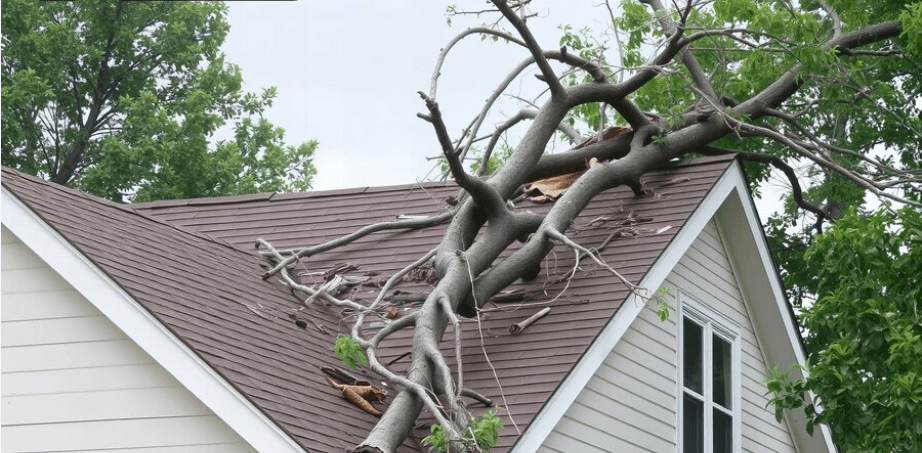Dec 18, 2024
Severe weather events can cause destruction to properties and have the potential to leave homeowners in despair and chaos. A clear comprehension of the process of storm damage clean-up is essential in order to effectively and safely restore your property. Below, we’ll walk through the key components of storm damage clean up services from assessing the damage to making repairs.
What Does Storm Damage Look Like?
Storm damage can also be anything from:
Wind Damage: Strong winds can rip off roofs, crack windows and uproot trees.
Water Damage: Heavy rain can cause flooding that can severely damage both exteriors and interiors of your property.
Hail Damage: Roofs can be dented, windows broken and siding damaged by hail.
Snow/Ice Damage: Can make roofs collapse or cause loads of other structural issues due to the weight.
The first step in storm response is identifying these types of damage.
First safety measures
When you’re ready to start cleaning up, make safety your first priority:
Wait for Official Clearance: Do not return to your property until local authorities do so.
Check for Dangers: Look for dangling power lines, shook structures or gas leaks. Flee if need be and call local emergency services.
Document every surface: Use direct photo and video evidence of everything to support your insurance claim process
Post Storm Status Check List
When it’s safe to do so, perform a comprehensive assessment:
Exterior Inspection
Roof: Look for missing shingles, leaks or structural damage.
Walls and Windows: Check for cracks, broken glass, or other signs of impact.
Yard: Check for fallen trees, branches or debris, which can be dangerous.
Interior Inspection
Water Damage: Check ceilings and walls for stains or leaks. Inspect floors for signs of warping or standing water.
Electrical Systems: Before restoring power to any electrical systems, make sure no water has gotten inside them.
Mold Risk: Check for mold in damp places.
Documenting Damage
Here are four important reasons why it’s crucial to properly document accidents for insurance purposes:
If preserving the scene with pictures, take clear pictures of all affected areas.
Make a list of damaged items with estimated values.
Get and keep receipts for any temporary repairs or emergency services.
What to Do with Your Insurance Company
Communicating with your insurance company promptly:
Send them your documentation.
Know your coverage details and the deductible.
Inquire about the claims timeline.
Temporary Repairs
Stall for professional assistance by preventing further damage:
Cover Roofs: If there are holes in the roof or shingles missing, cover them with tarps for now.
Board Up Windows: Wedge broken windows and doors to safeguard valuables.
Get Rid of Standing Water: Quickly remove water using pumps or wet/dry vacuums.
Hiring Professional Help
Some repairs you can tackle on your own, though many situations will need professional expertise:
Search for contractors that are licensed and insured and specialize in storm damage restoration.
Get several estimates to ensure a competitive price.
The contractor also has good references and reviews.
The Restoration Process
Generally, restoration follows certain key steps.
Diagnosing the Damage by Experts: A restoration crew will have a look at the damage at a basic level.
Creating a Restoration Plan: They will prepare a detailed plan which lays out the important repairs and their schedules.
Mitigation of Further Damage: Immediate steps will be taken to avoid any further damage (for example, drying wet areas).
Repair Work: Structural repairs, mold remediation, cosmetic repairs like painting or replacing flooring.
Final Inspection: After repairs are done a final inspection is performed to verify everything is safe.
Preparing Preventative Measures Against Future Storms
Once you have restored your property, you could take some measures to prevent this happening again:
Clean your gutters and downspouts on a regular basis, so that everything drains properly.
Invest in storm-resistant materials when conducting repairs (such as impact-resistant windows).
Plan for an emergency kit with candles, food, water and flashlight.
Conclusion
We'll guide you through all aspects of storm damage restoration in this article. Follow these steps from assessing the damage to hiring professionals to help ensure a sound restoration process with minimal stress. As we can see, preparation is crucial; staying ahead of the curve when it comes to maintenance can protect your home from future storms. Local experts for storm damage clean up services are at hand to help you with storm damage restoration, to ease you directly to the recovery path safely.
















